After a few days in Andalusia, a few more than initially planned, we were finally on our way. Having left Spain late the previous night, we woke up approaching Casablanca, in Morocco, with wonderful sunrise views of the Hassan II Mosque, reputedly the largest in the world outside of Mecca.
As we approached, the views improved and we could clearly see that this was no ordinary place. However, we are here looking at the back of the mosque and the better views are from the front.
There is a large square in front of the building, but still not large enough to be able to take the whole view in one shot, even with my widest angle lens; this is a composite of several photos, which is why this is slightly distorted. The minaret is 200 m high! I am told that the muezzin who goes to the top to call worshippers to prayers five times a day has an elevator to facilitate the task!
This is the only mosque in Morocco which is open to non-muslim visitors and I was really looking forward to the planned visit. However, since we arrived on a Friday, and relatively late on the Friday, we were unfortunately not able to go inside – a real shame. We were therefore limited to taking pictures of the very decorated facade and doors from the outside.
Everything seems gigantic, especially when compared to the human scale – notice the man dressed in white to the right of the gate in the shadows. However, it is very harmonious and quite peaceful and inspiring.
This is all we got to see of Casablanca – we were then bussed about one hour away to Rabat where we whizzed around the Royal compound for a short glimpse at the Royal Palace. We were supposed to stop and get out – we were told we could stop and get out – but at the last moment, it seems that again we were at the wrong place at the wrong time and since a lot of people were going to mid-day prayers, the security officers prevented us from stopping. All I got was this shot of the Royal mosque from the moving bus…
Rabat is surrounded by fortifications that are still mostly intact. Here is one of the city gates.
We drove to the Chellah – per Wikipedia, the Chellah or Sala Colonia is a necropolis and complex of ancient roman and medieval ruins near Rabat. Sounds really interesting, but this is all I got to see of it as there was no time to go inside!
After lunch, we got to visit the Hassan Mosque – finally something we can really explore. As this is also the burial place of former Moroccan kings, there are mounted guards at all entrances. They were very friendly and did not mind having their picture taken with tourists – I did not do that, of course.
The mosque was never built. The Hassan Tower, built in 1195 was to be the tallest minaret in the world but was never completed either. The mosque would have been the largest in the world, but only column bases were established before construction was halted at Yacub el Mansour’s death in 1199. He wanted the mosque to be the centerpiece of his new capital in Rabat.
Inside what would have been the mosque, there is the mausoleum of Mohammed V who was the first king of the newly independent Morocco from 1957 until his death in 1961. The mausoleum was completed in 1971.
Inside, Mohammed V is buried in the center. His two sons, King Hassan II who succeeded him and Prince Abdallah are buried in the smaller monuments in the back corners. This is also where a reader of the Koran usually sits reciting verses in a low voice. However, for some reason and consistent with a lot of other dissapointments during the day, when we arrived, he must have been on a break!
These are the guards at the other entrance to the mosque. Notice how there is dirt under the horses! I guess it is too dangerous for them to stand on the potentially slippery marble should it start to rain.
We also visited the Kasbah of the Udayas. A Kasbah is a fortified citadel in the muslim world which included a full city as well as the home of the local leader. This Kasbah was built in about 1150 by the Almohads after they conquered Rabat. This is the main gate, still one of only a few entrances into the Kasbah.
The streets inside are dark and narrow. I guess this is not a bad idea in the hot summer months.
After a short walk through the Kasbah, we returned to our ship and quickly sailed away, already after dark. I just had an opportunity to take this photo of the Hassan II Mosque fully lit as we went passed it on the way to Safi.
After another night at sea, we approached Safi in the early morning. This is a relatively small town but would be our getting off place in order to go to Marrakesh. The trip sounded grueling, with 2.5 hours in the bus to get there and then 3 hours on the bus to re-join the boat in Agadir. That would not leave a lot of time to visit Marrakesh, a place where I had been before.
In any case, as we approached land the sun came up and lit the top of the clouds before it could light the land or the sea.
I took several shots of a sea-gull flying towards the rising sun. I thought these came out pretty good!
We also had very nice views of the land and a small fishing boat which passed behind us.
Here is a sunset panorama of the coast approaching Agadir!
You must now be thinking: “How did he get that if he was supposed to drive from Safi and Marrakesh to Agadir?” Is this like the person taking a picture of his own plane taking off? Long story which I will share here!
The lady responsible for Visas at the Moroccan Embassy in Brussels did not appreciate the fact that one of our stops was shown in our itinerary as Laayoune, Western Sahara – Morocco. The first visa application was refused for this reason, but she did not tell us that when we made the application and waited 10 days for the reply. When we re-applied with a corrected itinerary, we did not have enough time before departure to get a new visa and we actually never found out if the second application was approved or not – the lady never called back. In the end, Bee did not get her visa (I did not need one) and she was refused access in Casablanca, where we had specifically asked for an ‘exception’. In Safi, we decided not to say anything. We left the boat and just as we got on the gangplank, one of the officers called us and asked for our passports. After 1/2 hour of discussions and frantic phone calls while we waited by the busses, they came back and apologised that unfortunately they could not let her off the boat. Since I had seen Marrakesh, and was not looking forward to spending 5.5 hours in a bus, I decided to stay on the boat too and we had a wonderful day of cruising instead.
Therefore, I got to see this sunset as we approached Agadir from the sea.
The sun came down over the sea, of course! None of these sunset views from the East Coast of Vietnam as was done in some films …
There was an odd shape in front of the sun in some of my shots. I was never quite able to identify it. It does not look like a ship, but there should not have been an island at that position, so likely that it is a ship seen from a strange angle.
We stayed in Agadir only long enough to have dinner and wait for the adventurous tourists who did go to Marrakesh and then sailed towards Areciffe, on Lanzarote, in the Canary Islands.
We found out that the trip to Marrakesh was even longer than planned as it took the group nearly one hour to leave the port in Safi as there was an additional passport check at the outer gates. They had very little time to visit Marrakesh after all, so the decision to stay on board was not so bad after all.
In Lanzarote, we visited the Parque Nacional Timanfaya – the Mascot is shown in this photo taken from the bus.
The park is situated in the heart of the remains of a volcanic eruption which destroyed nearly half of the island between 1730 and 1734. It was not a single volcano or caldera that caused this, but rather open cracks in the earth that were several kilometers long and spewed lava for several years. The area is rugged but can be visited by bus or on camel back. The camels wear special shoes in order to protect their hooves from the very sharp lava rocks.
We stopped at the Visitors Center for the views and a few demonstrations. The view is of a desolate land that has changed very little in almost three hundred years since the eruption. This is mostly because Lanzarote is the dryest of the Canary Islands and there has been very little rain to facilitate new growth on the land. In contrast with areas such as Iceland or Sicily (mount Etna) where any lava flow is quickly (within decades) repopulated with plants and animals. Here, it seems, there is not even a little bit of fungus or liken that has taken hold.
There has not been any volcanic activity in the area since 1734 and yet the temperature a few cm below the ground surface is hot enough to burn your hand – this is demonstrated in the area shown below where pebbles are picked up just below the surface and handed to each visitor. They are about 40-50 C so just the right temperature to hold in your hand.
In another area, there is a hole about 1 m diameter and 2 meters deep. In the bottom of the hole, the temperature is high enough to set straw on fire. The third demonstration involved water. The ranger pours water into a hole, first a quarter of a bucket and 30 seconds later, the rest. This is the result. Instant geyser on demand.
I also took a quick movie which includes the sound.
Behind the visitors center, there is what looks like a water well. However, no water could possibly come out of it. Instead, it is the local BBQ where fresh meat is cooked for the restaurant of the visitors center. A permanent BBQ that never needs extra charcoal! Not a bad deal.
After that, we took a bus tour around the area – no good pictures I am afraid and we were not allowed to exit the bus. The bus had dramatic music and running commentary to keep us entertained, and on track.
One reasonable picture from the bus – this shows a good view of one typical area where lava escaped. This actually looks like a caldera, but is not as there is no lava lake at the bottom – very desolate land.
After the tour, we went to a winery. There are many wineries in Lanzarote and they make reasonable wine. However, due to the wind, and the lack of water, vines are planted like I have never seen before. Each vine, which is never more than a few cm tall, is planted behind a semicircular wall that protects it from the wind. They are also planted in ash from the volcano – the ash serves to collect the morning due and route it to the roots of the plant before it has a chance to vaporize in the hot sun. Ingenious, but also probably the most expensive way to plant and harvest grapes.
This is what it looks like!
Another view shows how these are sometimes lined up very geometrically, and sometimes, they are just arranged as best one could. This is a lot of work and therefore wine is not cheap, but rather good. We took a bottle home, and even after several month in the fridge, and on a rainy day, it was still very drinkable.
As we left Areciffa, the sun was slowly going down getting ready to set and with a cloud just in the right place, any city can look good.
In the harbour, a nice three-masted square-rigger – not sure which boat this is and from the distance, unfortunately, I was not able to get better shots that this to identify her.
We sailed back to the African Continent and landed next in Layoune, in Southern Morocco, or better known as Western Sahara, even though Morocco considers this part of their own country after a peaceful conquest in the mid-sixties. This had remained a Spanish Colony after independence of the rest of the area had been granted by France. This is still not recognised by other countries as being part of Morocco and there are occasional clashes with rebels still hoping to gain independence.
As we were getting ready in the busses, there were several officials milling around, one with a camera and also several policemen or military police (I was not quite sure) – I was wondering why we would need a police escort! They peeled off as soon as we got into Layoune itself, so I stopped worrying.
We stopped at the only catholic church left in Layoune, called Spanish Church and is one of very few colonial vestiges left in this town. Interesting “almost-adobe” architecture.
The priest graciously welcomed us and gave a speech about the history of the catholic religion in this part of Africa which is mostly Muslim.
Next we were bussed to a desert oasis about 30 minutes out of the city. As soon as we left the city, our military escort was back! I felt like a target!
The oasis is very touristic, occupied by Bedouins who have probably not moved in several years. While we were congregating, there was a lady dancing to local music.
Here too, I took advantage of the video feature of my camera to make a quick movie and let you better share the experience with me.
It felt touristic, but then even the locals were taking pictures, so it must be quite good too.
We were served tea. This gentleman spent the first 10 minutes cleaning the tray and the glasses that he was going to use.
After pouring some tea in one glass, he starting aerating it, by pouring from glass to glass repeatedly as you can see in the photo below. There was more and more foam developing on top of the tea as he proceeded.
His motions and style were so perfect that I had to take a movie. Please watch carefully what he does as he sets the empty glass back on the tray!
We were in a oasis surrounded by desert. This is the view from the parking lot with the one road leading to this place.
On the way back to the boat, we stopped at a tall dune by the road – must have made our military escort very nervous – so we could play in the sand.
We discovered that the best way to come down the dune was to shuffle your way down…
Magnificent panorama of the Moroccan desert
This was our last stop in Northern Africa. Our next port of call will be Dakar, at the Northern end of Black Africa after 2 days at sea.
(1176 Page Views)



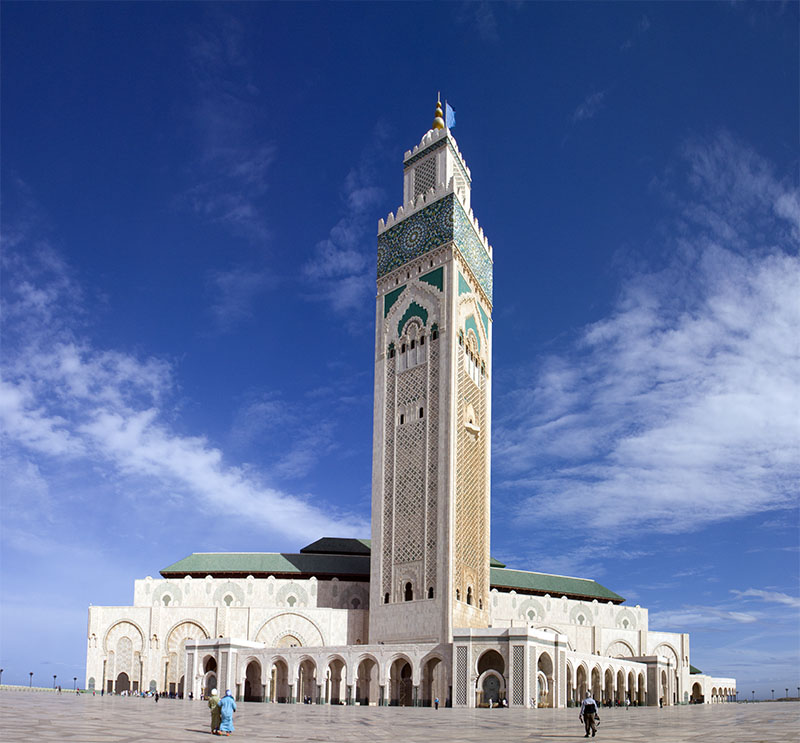


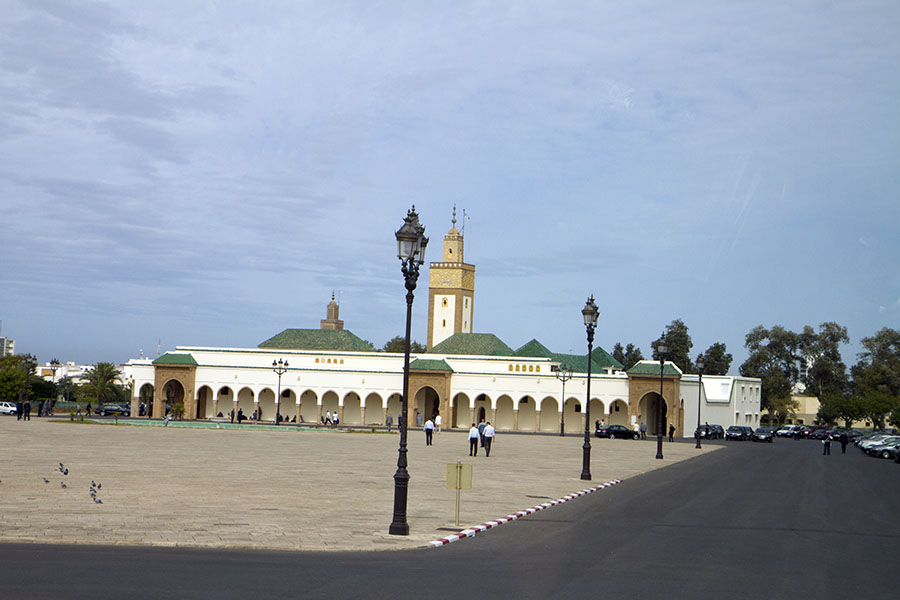
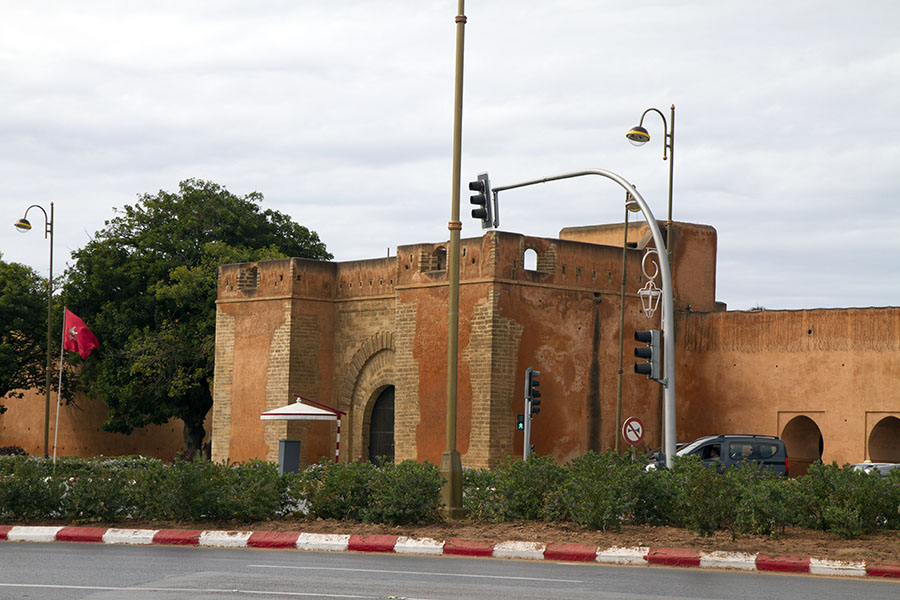
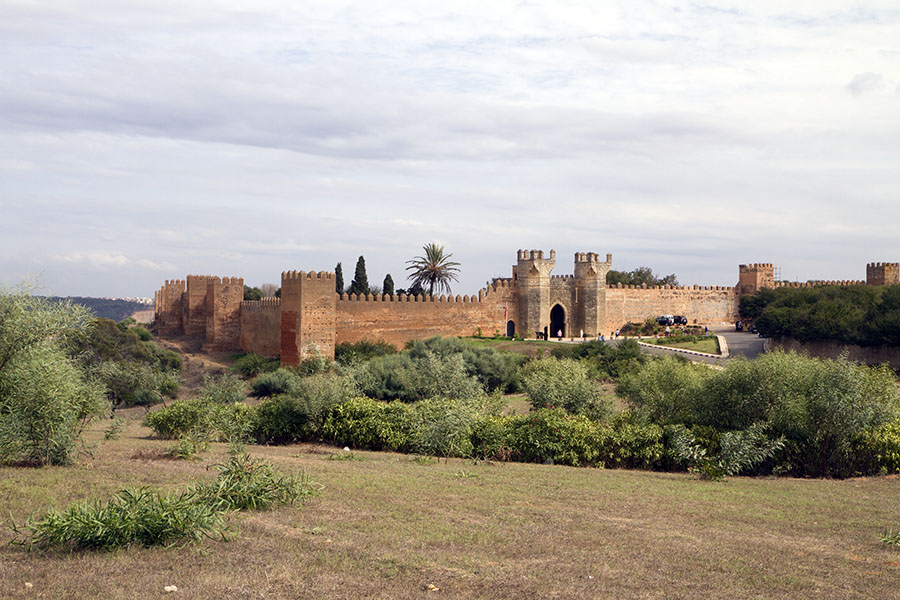





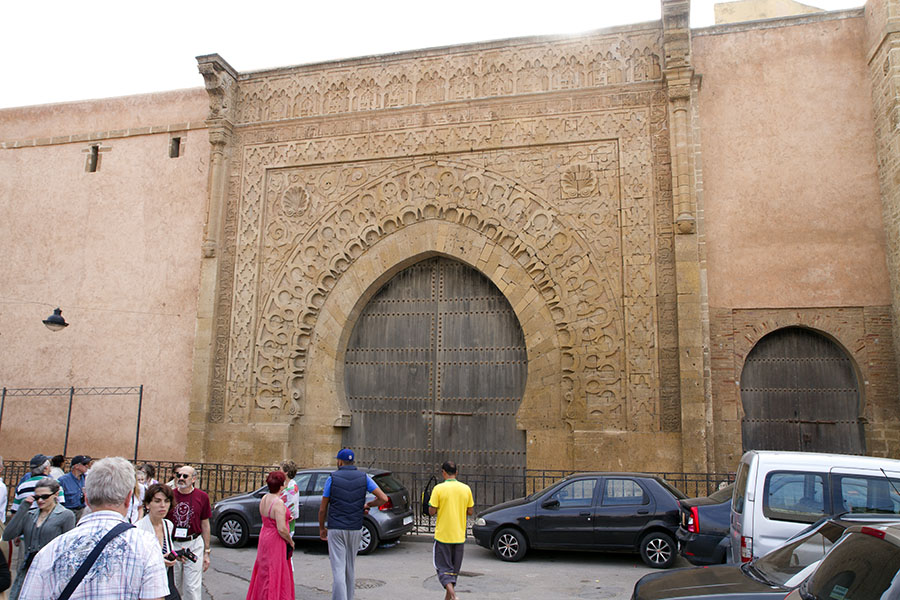
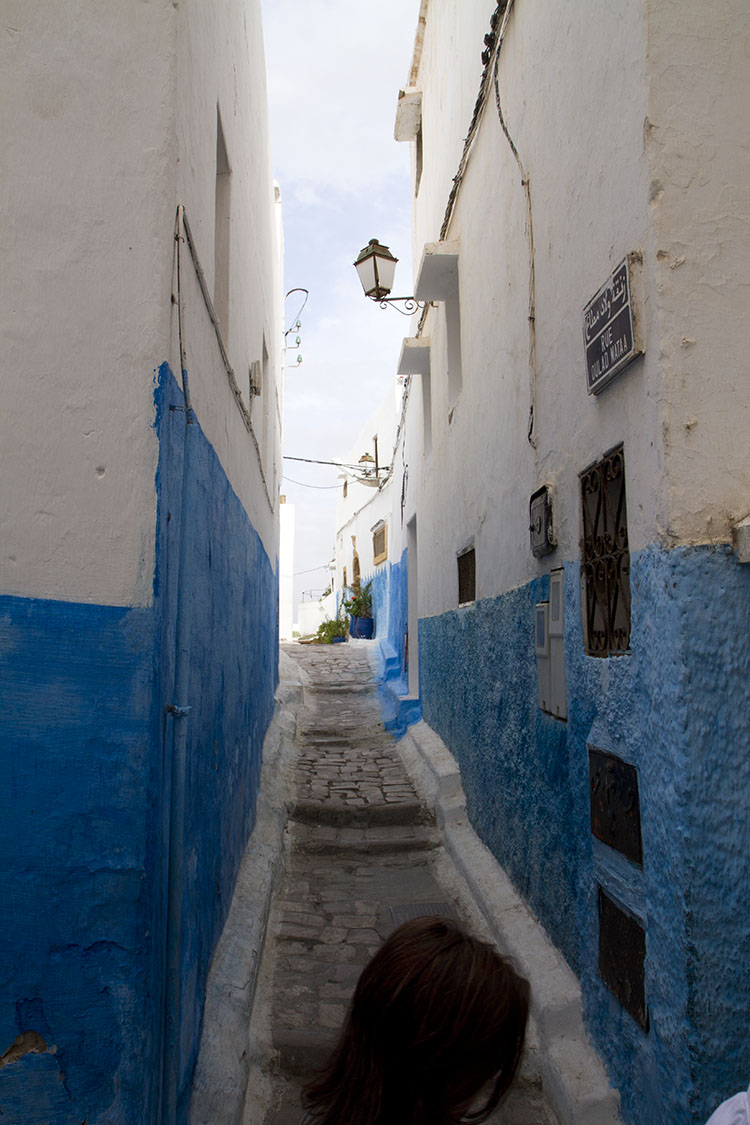


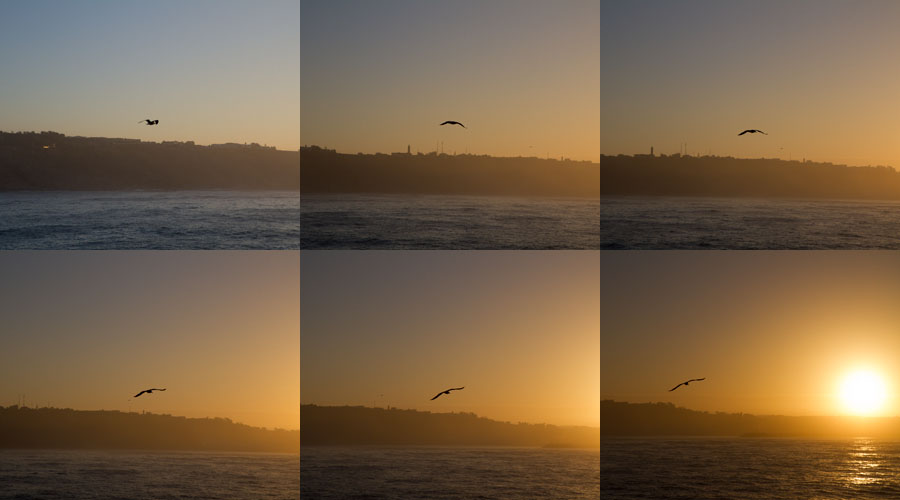

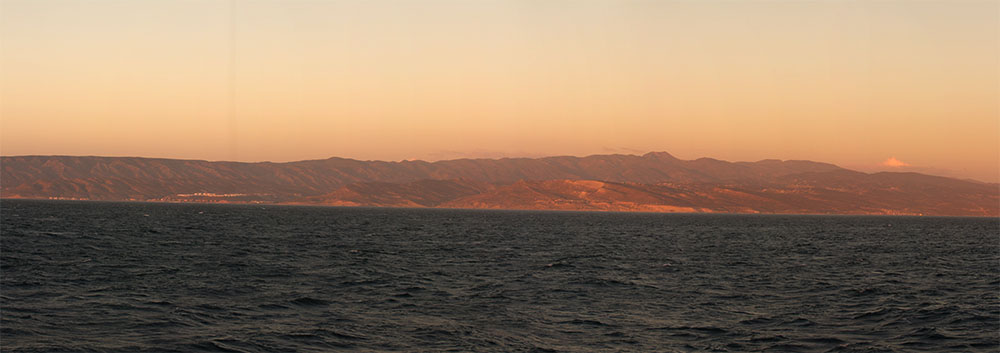


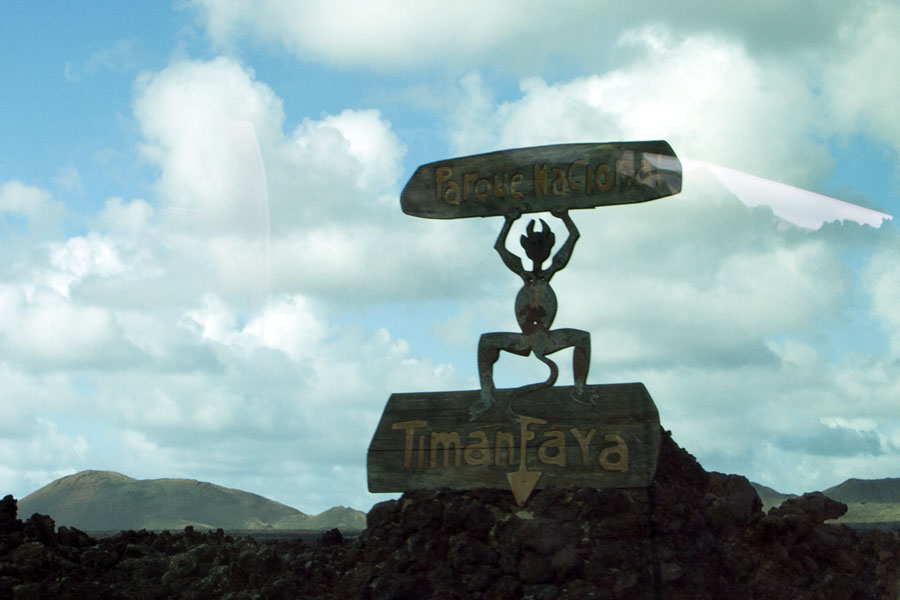


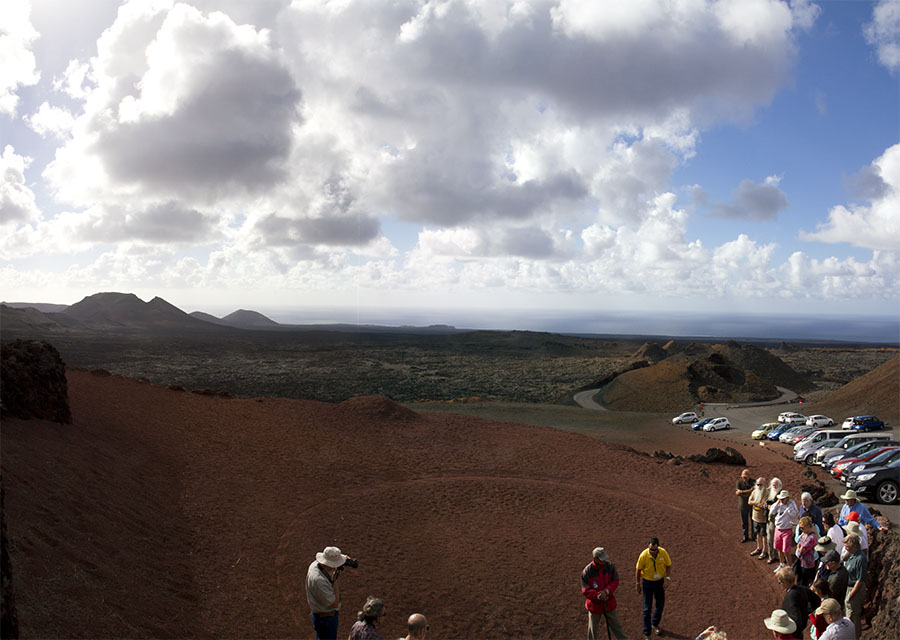

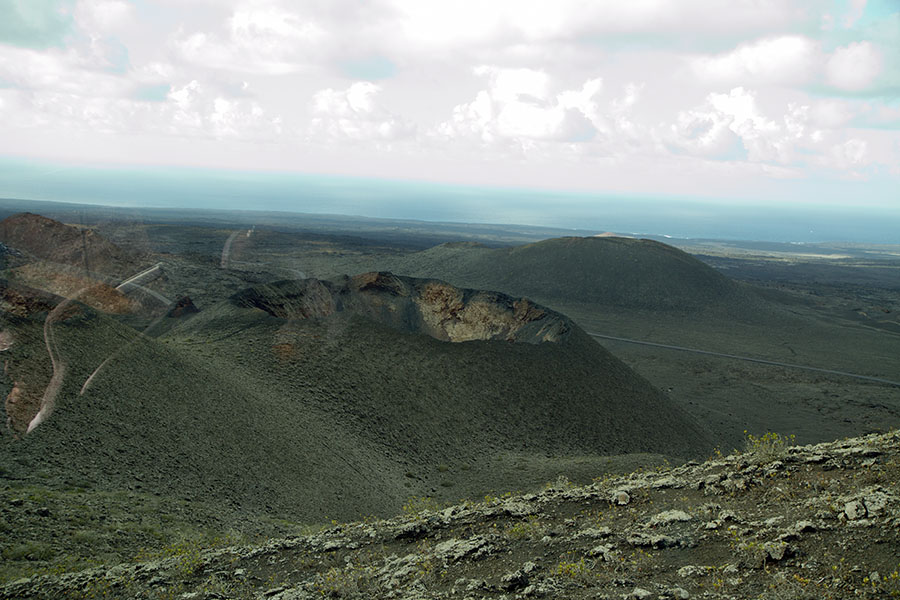

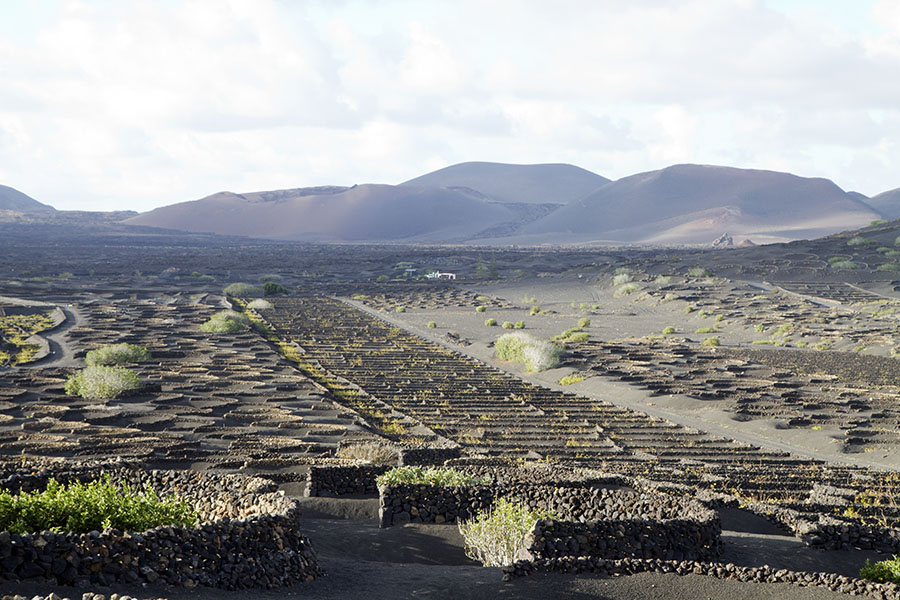
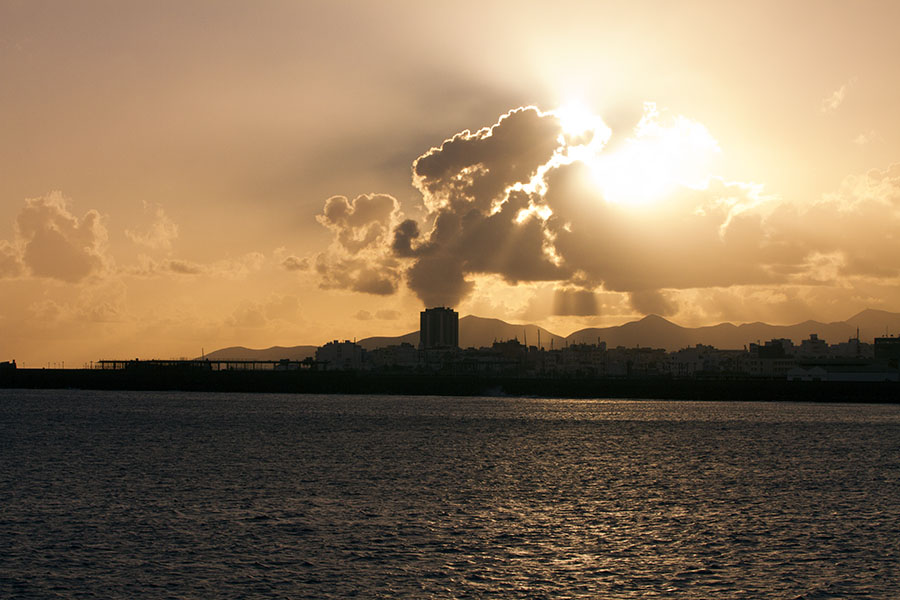
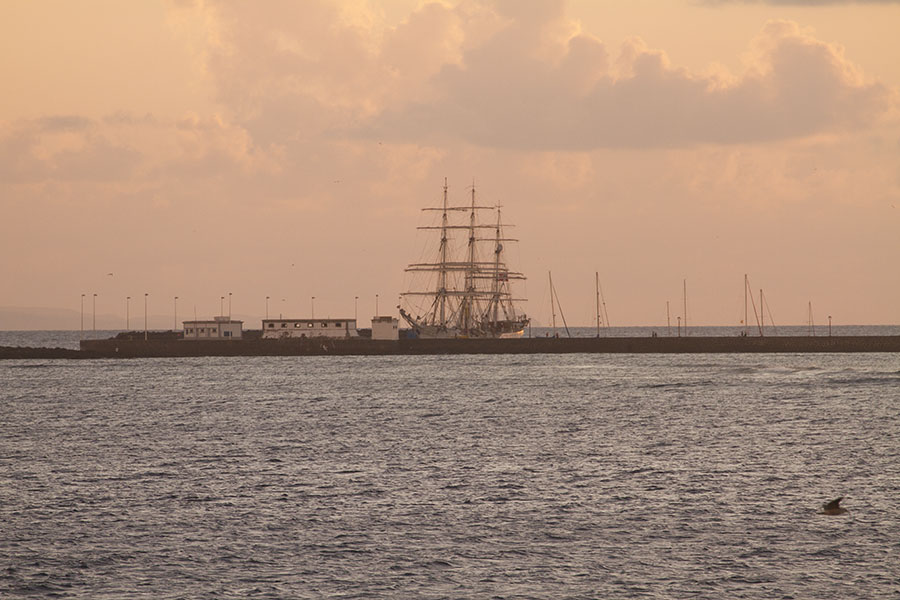

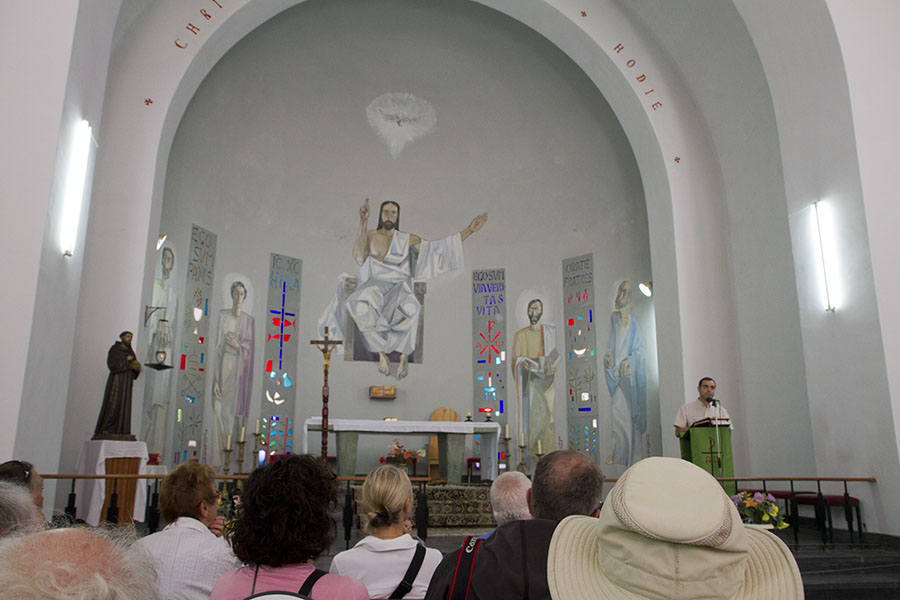

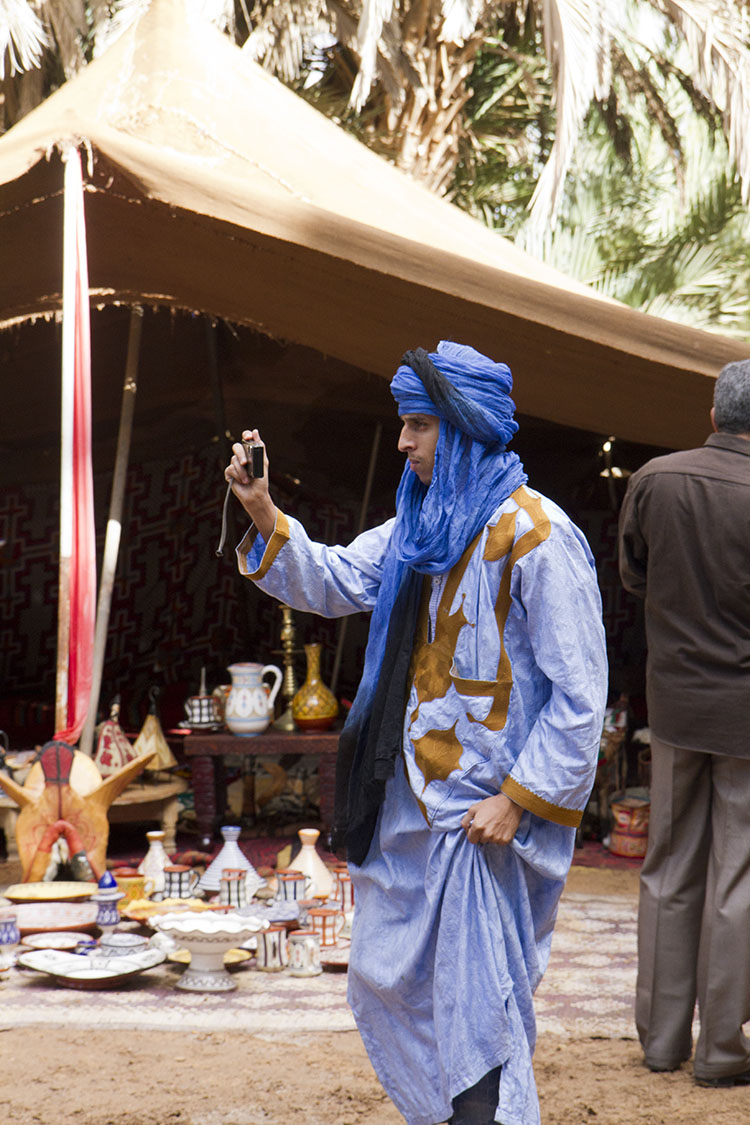
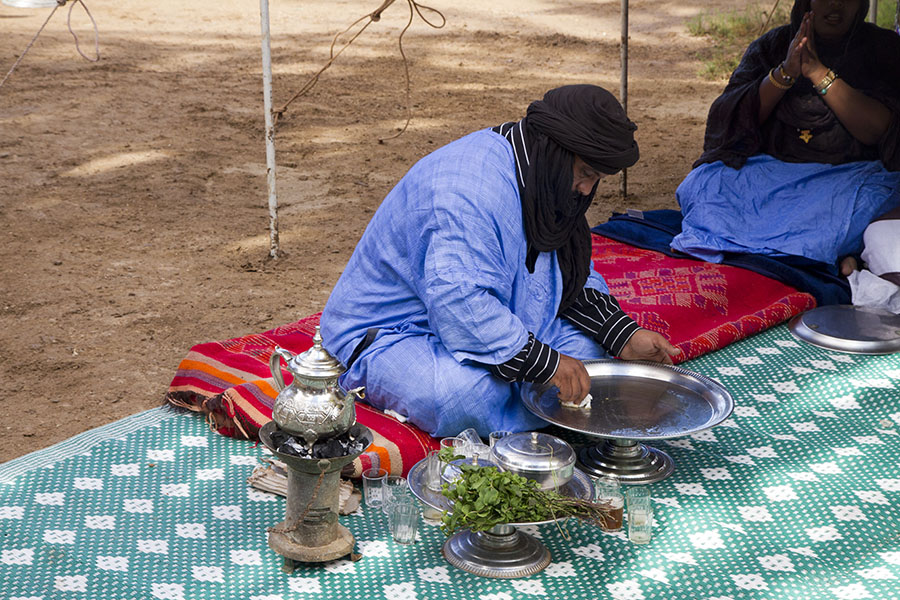
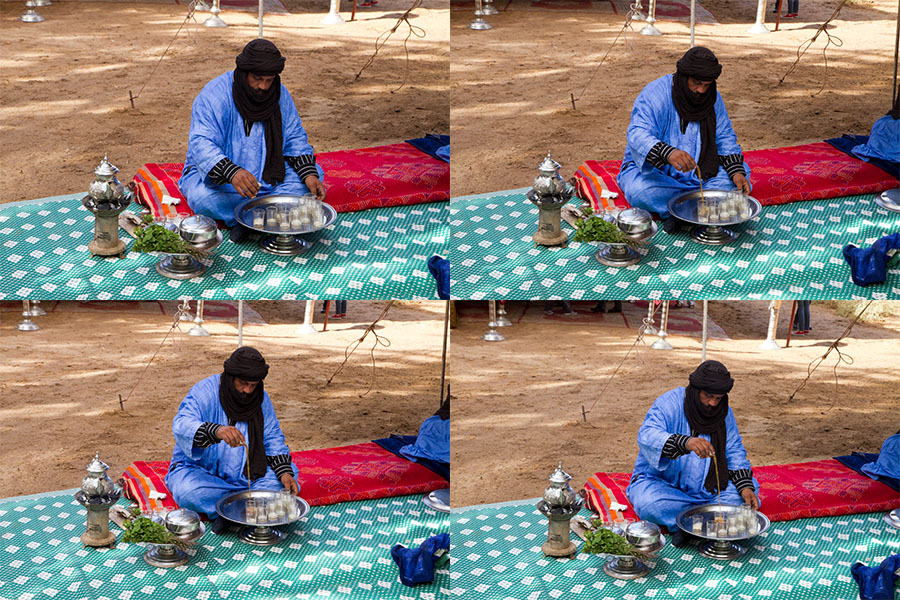
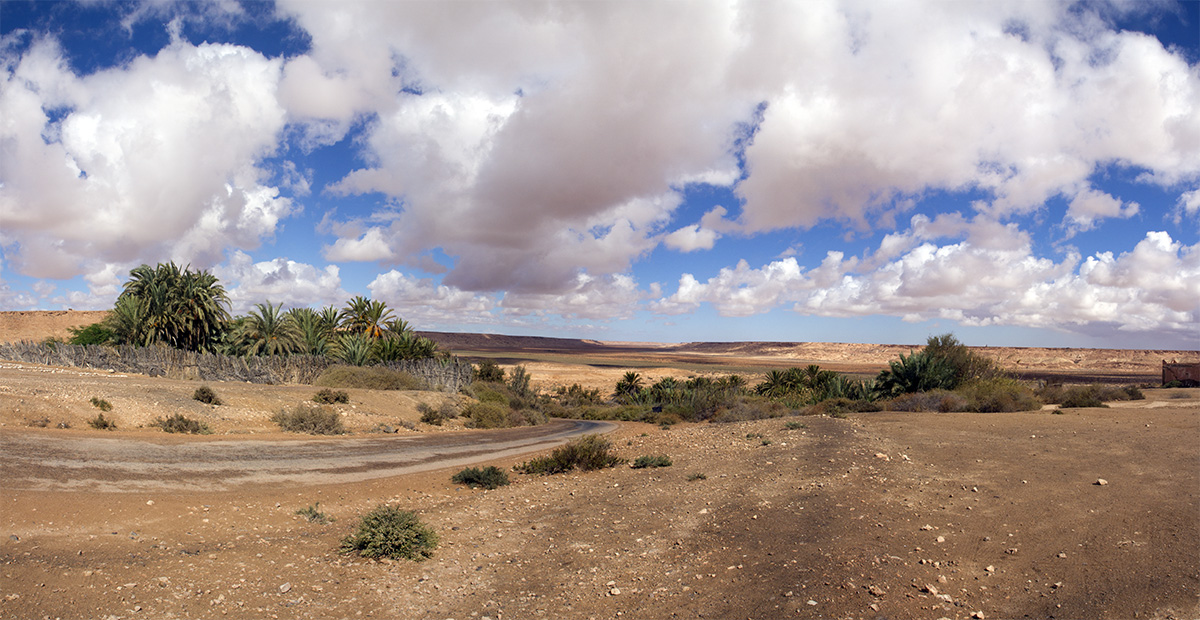
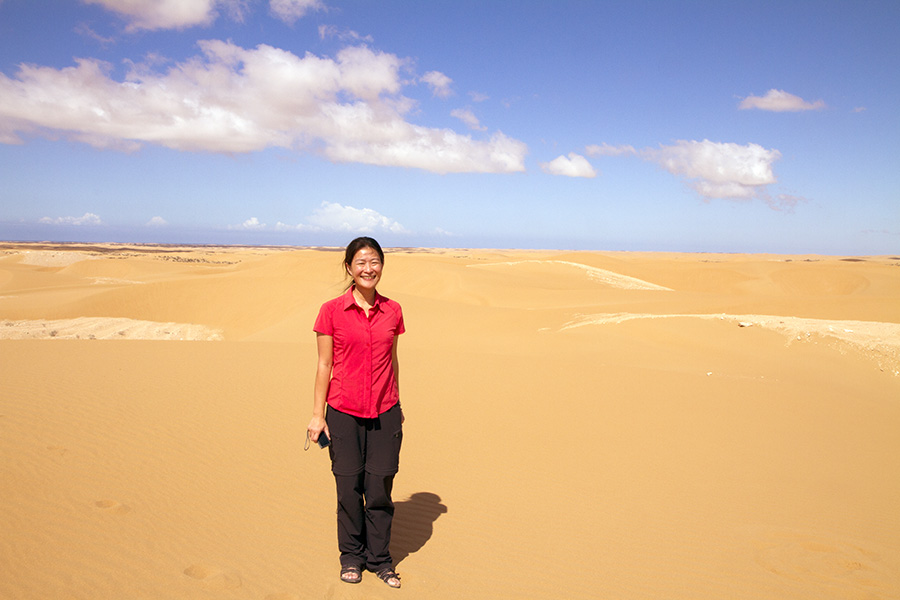

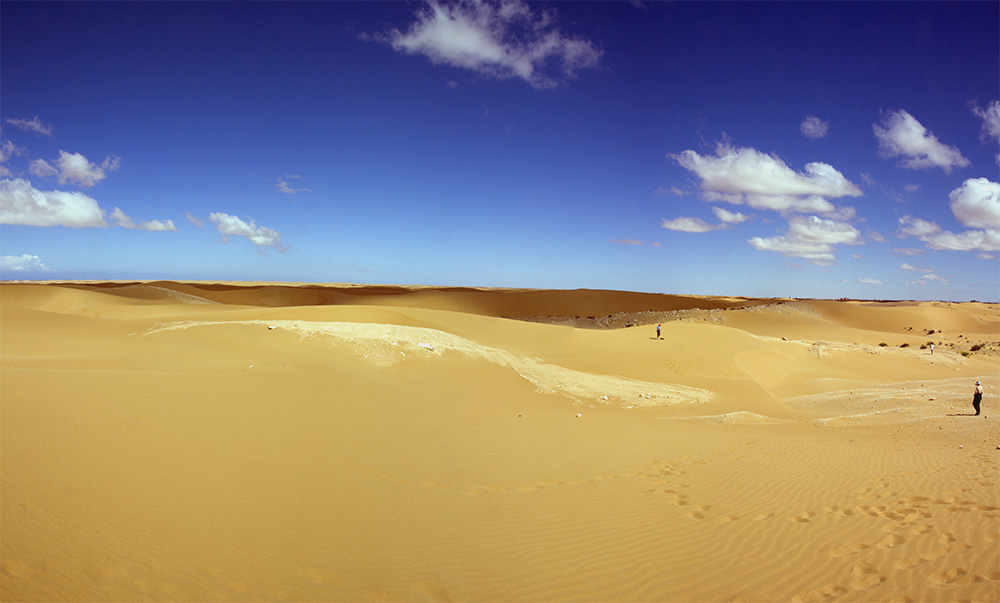
Dear Pierre, I really enjoyed your blog which contains interesting movies. I am planning to go to Morocco in December and am happy to see beautiful Hassan II Mosque and Rabat. Etsuko